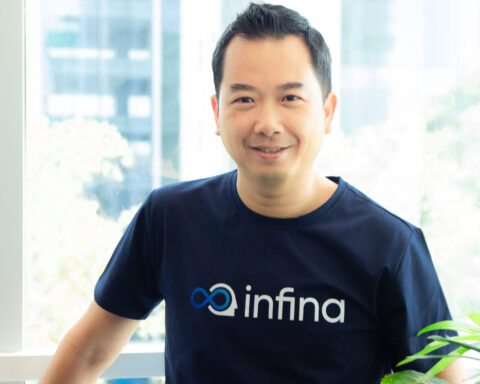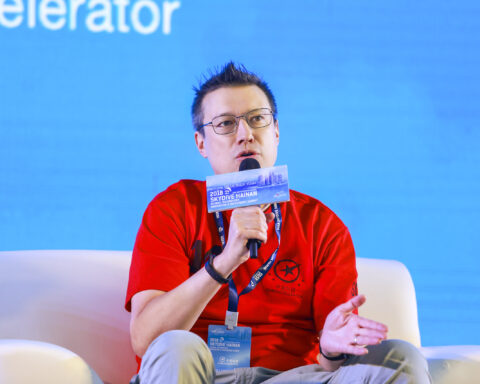Sign up to our newsletter to get updates on new articles.
Le Thi Hong Luong, Blue Dragon’s Anti-Trafficking Coordinator, discusses the causes of the recent tragedy in Essex, UK, and proposes some solutions.
Thirty-nine people were recently found dead in a lorry in an Essex industrial park on October 23, 2019. Immediately, that horrific event caught the attention of the press and social media all over the world.
In small houses in central Vietnam more than 12,000 km away, anxiety increased and a mournful atmosphere enveloped fathers, mothers, and relatives who were not able to contact their loved ones, who were also on the same journey to the UK. No one can imagine how the 39 individuals suffered on their many-hour journey in that fateful truck. At Blue Dragon, our hearts go out to their families and friends.
Many Vietnamese people migrate illegally to European countries this way. There is a long history of Vietnamese migration after the American-Vietnam War. When relatives and friends reach their destination countries, they help others back in Vietnam. Over time, smuggling rings have formed to organize illegal entry for the Vietnamese people into Taiwan, Canada, Australia and European countries, especially the UK.
Central Vietnam has extremely harsh weather conditions and is one of the poorest regions in the country. Impoverished people with unstable jobs and a low level of education do not qualify for legal jobs overseas. However, they are attracted by stories of a fancy life in the UK. At some point, they become aware of how hard illegal trips are and what kinds of jobs they will have to do at the destination. With the hope of changing their life and the pride of becoming a Viet Kieu (a Vietnamese person living abroad), they borrow a lot of money or pledge their assets to pay huge sums of money, $10,000 US to $40,000 US (according to various reports) to smugglers to start an arduous journey across different countries and seas.
Last year, the world press was astonished when 152 Vietnamese tourists went missing after they arrived in Taiwan. This October, all eyes turned to Vietnam again when there was evidence that there were Vietnamese people among the 39 victims of the deadly UK truck incident. It is certain that people who successfully cross the border to other countries face many dangers. They are very vulnerable because they have illegally entered another country without immigration documents, and in addition face language and cultural barriers. Worse than that, on their shoulders is the burden of debt and family expectations and they have to depend entirely on smugglers and organized crime rings. Finally, at the destination, many become victims of modern slavery and are forced to work on cannabis farms or are exploited in factories and in mining. They face health hazards, receive low wages and are at risk of being arrested at any time.
How many people have illegally crossed the border and how many have perished on journeys of months or years? No one knows. According to the UK National Referral Mechanism, over recent years more than 100 nationalities have made up the referrals, with Albanians and Vietnamese nationals the next most commonly reported potential victims of slavery after the British.
Human trafficking in Vietnam.
Sadly, this is only a part of the whole picture of human trafficking in Vietnam. According to the Vietnamese National Committee for Combatting and Preventing Human Trafficking, each year Vietnam rescues and identifies about 1,000 victims. More than 98% of them are trafficked abroad and up to 90% are trafficked to China for the purpose of sexual or labour exploitation. For historical reasons, in recent years the smuggling of people to more distant countries, especially the UK, has been from just five provinces: Hai Phong, Quang Ninh, Nghe An, Ha Tinh and Quang Binh. According to authorities, trafficking of Vietnamese people occurs in all 63 provinces. In 14 years of rescuing and supporting over 1,300 Vietnamese victims, Blue Dragon Children’s Foundation has worked with victims from 61 provinces across the country.
While the smugglers are organized and operate underground rings, the traffickers of women and children to China are quite different. Blue Dragon’s lawyers have provided legal representation for survivors over the past six years and the profile of traffickers is typically people who are poor, unemployed and poorly educated. More than 50% of traffickers come from the same district as their victims. They sell people to China after receiving a request from someone in China who they only know by name. This suggests that many Vietnamese traffickers are unprofessional and opportunistic. Their job is to take people to the border area, receive a small sum of money and hand victims over to groups of professionals across the border.
Victims of human trafficking in Vietnam can be anyone. They may be students; women who need jobs to raise their families and children; or poor children in mountainous remote areas who drop out of school to find work to help their families. They may even be babies or unborn children.
Human traffickers in Vietnam also can be anyone: a family friend, a kind neighbour, a boyfriend or even a mother who sells her child out of desperation. They appear otherwise as ordinary people. “Nam,” a 21-year-old Vietnamese man was working in China and made friends with a Chinese man. The Chinese man asked Nam to find Vietnamese girls to sell. After working a long day, Nam went back to his rented room and used fake accounts with a profile of a Chinese Hmong man or a Border Guard to send friend requests to girls on Facebook. He asked his Vietnamese friends to do the same. They began chatting and flirting with girls. After a time, Nam expressed his affection for them and invited them to visit his family in Lao Cai, a border province with China. Six women aged 15 to 24 became his victims when they travelled by themselves to meet their boyfriends in person. Four were sold into brothels or forced marriages in China while the other two were rescued by Vietnamese authorities. Blue Dragon rescued another of Nam’s victims in 2018 after her family had heard nothing from her during her six months in China.
There are no accurate official figures of Vietnamese victims of trafficking, but according to the Global Slavery Index 2018, it is estimated that 421,000 Vietnamese people are living in modern slavery, meaning that for every 2,000 citizens, nine are victims of human trafficking.

How to end human trafficking.
The Vietnamese government’s efforts and commitment as well as the contributions of multilaterals and non-government organisations (NGO) to fight human trafficking has been remarkable. But how do we end human trafficking in Vietnam? The mission sounds impossible. Although it is a hard task, we cannot stop but need comprehensive intervention from many sides. As an NGO specializing in rescuing and assisting victims of human trafficking, this is Blue Dragon’s approach.
Exceptional care for each individual matters
Changing policy and building the capacity of law enforcement officers and those responsible for supporting trafficking victims is extremely important. But the centre of human trafficking must be its victims because human trafficking is a serious violation of human rights. Therefore, it is essential to rescue all victims from exploitation and slavery, and we need prevention so there are no new victims. We are not able to say that human trafficking has ended as long as there is still a victim who is yet to be rescued. At Blue Dragon, we never accept leaving a person behind. We receive regular calls for help from families and community members whose sons and daughters have gone missing. The victims may be children from ethnic minority villages in rural Vietnam, where poverty is rife and very few people are literate. Traffickers target them for work in sweatshops far from home, in slave labour conditions. Or they may be girls or young women from anywhere in the country, who have been betrayed by traffickers who won their trust and then sold them into forced marriages or brothels in China. Although the poor and ethnic minorities are at higher risk of becoming victims of trafficking, anyone can be trafficked and Blue Dragon rescues victims regardless of their background. Importantly, rescue does not secure a happy ending. Survivors may need many types of support to reintegrate and rebuild new lives. Blue Dragon provides individual assistance based on the needs of each person and our support does not end until the survivor is able to be independent.

Go beyond raising awareness
Large-scale media campaigns that attract public opinion may be necessary. However, people who are at high risk or the most vulnerable to human trafficking rarely access such information. At Blue Dragon, we have stopped talking about raising awareness and are focusing instead on activities that can lead to behaviour change. Instead of organizing large-scale communication campaigns, Blue Dragon’s staff work with villages and high-risk communities to provide accurate information and direct support for them.
Traffickers commonly offer vocational training for children to persuade their parents to let their sons and daughters work for them, but in reality the children are enslaved in factories. Traffickers offer sweeteners to families, such as a $50 advance to let their children go. To counter this, Blue Dragon staff spend time talking with families, community members, and officials to let them know the reality of life for trafficked kids. We organize small scale meetings where local officials recount their own experience of going into squalid factories and finding children asleep at sewing machines, working through the night. Teachers are taught to implement an “early warning system” to recognize potential cases and inform us when a child goes missing.
Word quickly spreads through the villages, and the impact is profound. When community members hear first-hand stories of what happens to their children who are taken away from home, they resolve to never let it happen to their own family. Once a few families start talking about how bad it is to send children away, the whole culture of the village changes.
Child by child, family by family, village by village, district by district. This is how Blue Dragon is working to end the trafficking of children from Hue and Dien Bien provinces into the garment industry. Some years ago, we set more than 30 children free from labour exploitation in sweatshops every year. But in recent years we only have one case per year or even none. Our work to end the trafficking of children into sweatshops succeeded because of targeted, village-specific intervention – not because of awareness raising.
Deal with all forms of human trafficking
The majority of Vietnamese people still think that human trafficking means women and girls trafficked to China for sexual exploitation or organ removal. But it is clear that victims include men and boys who are badly exploited in mines, farms and factories within the country or across the border. Vietnam has very clear provisions in the law about these types of trafficking. However, it’s time for the authorities to engage in more drastic measures to deal with all types of human trafficking. Blue Dragon is persistent in this regard. Besides rescuing women and girls, we have rescued and supported hundreds of male victims from labour exploitation. Although finding justice for them is arduous, we do what we can to protect their rights and interests and put it on the table for discussion whenever we can.
Walking alongside
Blue Dragon has organized many training meetings for local officers, police and border guards to improve their anti-trafficking skills. However, we find that the most effective way to support and improve their capacity is to walk alongside them. We call it on-the-job training. Many meetings have been organized and officers have attended various trainings. But without a supportive resource or a mentor, those officers may not really know how to apply what they learn. Blue Dragon’s chief lawyer directly rescues victims and joins in investigations. By doing so, he truly understands the difficulties that law enforcement agencies face, and then provides them advice and helpful contacts. After each training, local officers have the contacts of leading experts in the field to call when they need help. They know that they can contact Blue Dragon at any time for victim rescue and support. We invite policemen and border guards to collect victims’ testimony at our centre, instead of at police stations. We do not only offer officers training sessions on victim-friendly work but invite them to observe Blue Dragon social workers, psychologists, and lawyers working directly with victims. They gradually change their behaviour and make adjustments. We invite labour officials and the Women’s Union to join us in visiting and supporting victims, so they can witness how our social workers practice social work. This approach takes time, but we are demonstrating it is a model that works, and advocating for its use in other localities.
Creating long-term change
From our work on the ground with each victim, each family, each local officer and every community, Blue Dragon has gained invaluable practical experience. We understand the difficulties of each stakeholder and work with them to offer suitable solutions. We are implementing models of anti-trafficking work in three hotspot provinces (Thua Thien – Hue, Dien Bien and Ha Giang) to support their efforts to tackle human trafficking issues. And above all, Blue Dragon works with the authorities to address legal loopholes. Blue Dragon is working on law reform projects such as the rights of victims of crime to have legal counsel, a circular on child friendly investigation procedures and guidelines in handling sexual abuse crimes.
Human trafficking is ultimately a human crime. To end or reduce this crime, there are many things to be done. On the large scale, it requires governments to join multilateral agreements for better cooperation as well as to improve their internal legislation and the rule of law. At the medium scale, people need to be educated about the issue and the most vulnerable communities supported to become resilient to human trafficking. Although these interventions are essential, there’s still something more to be done, and that’s on the individual level. Millions of people are in slavery around the world and each one deserves to be set free. Therefore, Blue Dragon responds to each call for help and continues our rescue work. Some cases take a few days and some take a year, but as long as there are people in slavery, we will continue. ∎
Luong Le is an anti-trafficking co-ordinator at Blue Dragon Children’s Foundation in Vietnam.
Sign up to our newsletter to get updates on new articles.






